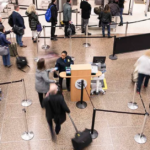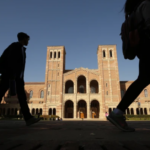World leaders, policymakers, and road safety advocates gathered this week. Their goal was to curb the rising number of road traffic deaths.
The WHO-led this high-level meeting to push for stronger policies and improved infrastructure.
The event happened at a critical moment. Traffic-related deaths remain a global public health crisis. Every year, an estimated 1.35 million people die in crashes.
Many of these victims are pedestrians, cyclists, and motorcyclists. Low- and middle-income countries suffer the most. Their road infrastructure and safety laws lag, increasing transportation demands.
Leaders discussed strategies to halve road traffic deaths by 2030. This goal aligns with the UN’s Sustainable Development Goal (SDG) 3.6.
Experts stressed that reducing deaths requires strict law enforcement and better road designs.
The WHO shared new data on significant risk factors. Speeding, drunk driving, and distracted driving were key concerns. Many regions also lack widespread helmet and seatbelt usage.
Some countries have committed to strengthening traffic laws. Sweden pledged extra funding for its Vision Zero initiative, which aims to eliminate road deaths through better urban planning and strict enforcement.
Developing nations called for more global collaboration. They need funding to improve infrastructure and enforcement mechanisms.
Rapid urbanization has increased vehicular traffic, making road safety an urgent issue.
India and Nigeria presented their challenges. Their officials requested international partnerships. They hope to access technological solutions and better traffic management systems.
Technology is a game-changer for road safety. AI-powered traffic monitoring and vehicle automation can prevent crashes. Experts discussed how innovations reduce human error.
Private sector leaders showcased new safety technologies. Features like adaptive cruise control and automatic braking improve safety, and real-time traffic analytics also help prevent accidents.
Public awareness remains crucial. Education programs help young drivers understand safe driving habits, and awareness campaigns target impaired driving and community-led safety efforts.
Transportation policies must protect vulnerable groups. Children, elderly individuals, and people with disabilities need safer roads. Inclusive policies ensure everyone’s safety.
This global gathering will shape future policies. Governments, civil society, and private companies must work together. Their efforts can create safer roads and sustainable transportation systems.
Experts believe progress is possible. However, meeting the 2030 goal requires ongoing commitment. Funding, enforcement, and political will are key to success.
- 107shares
- Facebook Messenger









